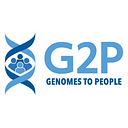How Genomic Researchers Can Save Their Participants’ Lives
A new report on returning genomic research results to biobank participants makes a strong case for doing more of this — and how not to do it.
Millions of people around the world have had their genomes sequenced as research participants, but few will ever see their own results — even if they contain actionable, potentially life-saving information.
This is commonly justified by the idea of a participant’s “right not to know” and concerns about potential harms from learning such information. There are also many uncertainties about how to go about returning these results, and if done right, it’s quite a bit of additional work for research teams.
This is changing, though, and new genomic studies are announcing their intent to return actionable results to participants, even though there are wrinkles that still need to be ironed out.
A recent study took on some of these wrinkles, with startling results. Our team from Mass General Brigham and Harvard Medical School performed genomic analysis on samples from the Mass General Brigham Biobank, offering to return actionable results to 36,000 biobank participants for 59 genes. We convey the lessons we learned along the way in a new paper in the American Journal of Human Genetics.
Lesson One: Sharing this information really could save lives. Of the 256 biobank volunteers who were informed that they carried an increased risk of a serious condition, over 75% were hearing about it for the first time. Around half of them already met the criteria to get genetic testing for the condition in question, such as related symptoms or a family history, but had never received it. In most cases, they hadn’t been offered it, despite the signs. The other half had no such signs; if they hadn’t learned of their risk through this study, they might have never known until symptoms appeared.
Lesson Two: Genome sequencing is much better at this than the faster, cheaper option of array-based genotyping. Genotyping is widely used (again: faster, cheaper) in research and consumer genetic testing as a way of looking only at very specific places in the genome. But in the biobank study, the team initially genotyped samples, then used sequencing to verify the results — and discovered that 45% were incorrect.
In other words, if the team had gone ahead with just genotyping and no sequencing — as many researchers might — nearly half of the people notified of an increased risk might have gotten a false positive. That’s a fairly big deal.
Genotyping fell even further short on false negatives. We found that of all the dangerous variants discovered through comprehensive sequencing, genotyping had only identified 28% of them.
As genome sequencing continues to become more accessible and affordable, it may become routine in these situations. Eventually, the problem might resolve itself that way. But given the stark results of this study, genomic researchers who are returning results to participants need to look at how to incorporate sequencing now, not later. For example, if a team is using genotyping for their research project and also returning actionable findings from that genotyping to participants, it would make a great deal of sense to use sequencing to double-check outgoing reports to avoid sharing an alarming number of false results.
Returning genomic research results to participants can clearly save lives. The effort is real, but it’s worth it.
